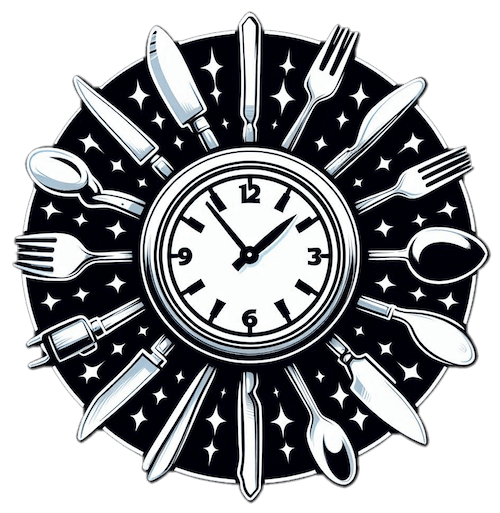Alternate day fasting (ADF) is where you alternate between days of normal eating and days of fasting or calorie restriction. On fasting days you eat about 500-600 calories. This creates a calorie deficit without having to make long term dietary changes.
ADF uses your body’s own metabolic processes during the fasting periods. According to the National Library of Medicine studies, fasting triggers autophagy, a cellular clean up process that promotes longevity and health. Intermittent fasting has also been shown to improve insulin sensitivity so your body can process glucose more efficiently and potentially reduce the risk of type 2 diabetes.
Alternate Day Fasting Benefits
ADF has been shown to:
- Weight Loss: Create a calorie deficit without losing muscle mass.
- Heart Health: Fasting lowers LDL cholesterol and blood pressure.
- Metabolic Health: Increased insulin sensitivity and reduced risk of metabolic syndrome.
- Cellular Repair: Autophagy during fasting helps with cellular repair and maintenance.
Risks and Considerations
ADF may be challenging or risky:
- Nutrient Deficiency: Prolonged calorie restriction can lead to nutrient deficiency.
- Hunger and Fatigue: Some may experience extreme hunger and fatigue on fasting days and can’t function normally.
- Mental Health: The restriction of ADF can exacerbate eating disorders.
- It’s crucial to consult with a healthcare professional before starting ADF, especially for individuals with underlying health conditions.
Getting started
Before you start an alternate day fasting (ADF) you need to prepare. Knowing the basics will mean successful and enjoyable fasting.
You may need access to supplements, hydrating fluids like water and herbal teas and a way to track your food intake. Keeping a journal will help you track your progress and make adjustments.
Get advice from a certified health professional to see if ADF is suitable for you. A health consultation will address the risks and give you personalized recommendations especially if you have existing health conditions.
Set achievable goals at the start. Set specific, measurable targets like weight loss or improved metabolic markers. Go for incremental progress to keep yourself motivated and avoid setbacks.
Designing an ADF schedule involves planning your fasting and non-fasting days. For example, you can fast on Mondays, Wednesdays and Fridays and eat normally on the other days. Flexibility in scheduling allows for individual lifestyle.
Balanced meals with whole foods will ensure nutrient adequacy on non-fasting days. Include lean proteins, whole grains, vegetables and healthy fats in each meal. Don’t overeat to negate the fasting benefits.
Tips
To be successful with alternate day fasting (ADF) you need to adopt practical strategies that support health and habit.
Drinking enough water is key to ADF success. I make sure to drink at least 8-10 glasses of water a day. Herbal teas and electrolyte drinks help with hydration on fasting days. Biohydration helps the body and reduces hunger cues.
Managing hunger pains requires planning. I eat high fiber and high protein foods like lentils, beans and lean meats on eating days to feel fuller. On fasting days I drink broth and stay busy to distract from hunger. Chewing sugar free gum helps with cravings.
Adjusting exercise routines is necessary for ADF. I do moderate intensity exercise like walking or yoga on fasting days to avoid fatigue. On eating days I do more intense exercise like weight training or cardio to feel energized and perform at my best.
Tracking progress gives you insight into ADF. I use a food diary or apps to log daily calories, weight and physical activity. Regular check-ins with my doctor to make sure I’m on track. Biomarkers like blood sugar and cholesterol in check means I’m healthy.
Motivation is key to long term ADF. Setting small goals to celebrate progress. I join online fasting groups for support and accountability. Remind myself of the benefits and track the good changes.
Common Problems And Solutions
Alternate day fasting has its challenges. Knowing and addressing these common issues helps with consistency and success.
Dizziness happens often because of electrolyte imbalance or dehydration. Hydrate all day with water and electrolytes. Eat balanced meals with salt and potassium during eating windows to stabilize your body’s needs.
Social events can disrupt fasting schedules. Tell your friends and family about your alternate day fasting goals and benefits. Choose non-food related activities like hiking or movies. If you must attend a meal, plan your fasting schedule around big social events to minimize disruptions.
Feeling unwell while fasting is normal but means monitoring is required. For mild symptoms like fatigue, increase your calorie intake a little within the fasting day. If symptoms persist or are severe, pause the fast and consult a healthcare provider to re-evaluate your approach and make sure fasting is suitable for you.
Weight loss plateaus happen during long term fasting. Break through plateaus by changing calorie intake and exercises. Do resistance training during eating days to build muscle and boost metabolism. Evaluate and adjust macronutrient ratios based on progress.
Support networks are key to motivation. Join online fasting communities or forums for alternate day fasting. Comment, share and ask openly. Having a support system makes fasting easier and fun.
